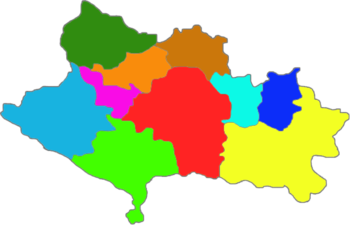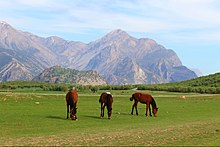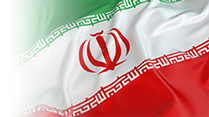Lorestan province is one of the western provinces of Iran. This province has an area of 29,308 square kilometers and a population of more than 1,760,000 people and is the thirteenth province in terms of population. Khorramabad is the capital of the province. Lorestan is a mountainous land and except for a few limited plains, it is covered by the Zagros Mountains. Oshtrankooh with an altitude of 4150 meters is the highest point of the province located between the cities of Doroud, Azna and Aligudarz and its lowest point is located in the southernmost area of the province and is about 500 meters above sea level. According to archeological findings, this region is one of the first ancient human settlements and Lorestan bronze has a great archaeological reputation. Lorestan is the only province in Iran that has one of the four main sections of the National Museum of Iran due to its extraordinary historical importance. These 4 main sections are prehistoric, historical and Lorestan, Islamic era, seals and coins. Lorestan province is the third most water-rich province in the country and has 12% of the country's water. This province has suffered a lot of damage during the Iran-Iraq war, despite being borderless.
Historical geography of Lorestan
|
Shirdal, Museum of Ancient Near East Berlin
|

Masks found in Kalmakreh cave in Poldakhtar city, construction period; Achaemenids |
Before the arrival of the Medes, the inhabitants of Lorestan were tribes such as the Cassians, Ellipians, Lulubians and Elamites. Lorestan has witnessed the migration of Aryan tribes as part of Iran. The Medes migrated to the west of present-day Iran, including parts of present-day Lorestan. After entering the Zagros, the Medes settled the tribes living there, namely the Cassians, Ellipians, Lulubians, Elamites and other Asian tribes, and spread their Persian language in the region. After the Arab invasion of Iran, the Lorestan region was also known by various names such as Jabal, Little Lor, Pishkuh and Lorestan Fili.
Lorestan means the settlement of the Lor people. The word refers to the lands of the Lor people and means the geographical area in which the Lor people live. With this explanation, the borders of Lorestan can be determined from the western plains of Khanaqin and Mendali in Iraq to Arjan plain in Fars province in Iran and from the north of Hamedan province to the shores of the Persian Gulf. The name of Lorestan before the Safavid rule included the settlement of the Bakhtiari Lors, the Kohgiluyeh Lors and the Boyer-Ahmad Lors. However, after the Safavid rule, the settlement of the Bakhtiari Lors was registered in the Bakhtiari region, and the geography of the name Lorestan was limited to the borders of present-day Lorestan and Ilam provinces. This region was also divided into two parts, Poshtkuh and Pishkuh during the Qajar rule. The following diagram shows the divisions of Lorestan from 300 AH until now.
Cities and towns
- azna
- Aligudarz
- Borujerd
- poldokhtar
- chegheni
- Khorramabad
- delfan
- Dorud
- romeshkan
- selseleh
- kohdasht
|
 |
At the beginning of the Pahlavi period, Lorestan was part of the governorship of Khuzestan and Lorestan, which soon separated from Khuzestan and became independent as the governorship of Lorestan. At the beginning of its formation, it had two cities, Khorramabad in the west and Boroujerd in the east. In a short time, Aligudarz separated from Golpayegan city and became the third city of the province. The process of forming new cities had stopped until the end of the 1360s, but at the end of the Iran-Iraq war, Dorud from Boroujerd, and Kuhdasht and Delfan also separated from Khorramabad and became cities. In the following years, Aleshtar and Poldakhtar separated from Khorramabad city and Azna from Aligudarz city and became independent cities. Chegni city was separated from Khorramabad city at the end of 2007. The newest city of this province is Romeshkan city, which was separated from Kuhdasht city at the end of 1392 and became independent. The center of this city is Choghabel city. Lorestan province currently has 24 urban points. The largest cities of Lorestan in terms of population are: Khorramabad, Boroujerd, Doroud, Kuhdasht, Aligudarz. The largest city of this province in terms of urban size and population is the city of Khorramabad and the largest city of the province is the city of Aligudarz.
|
View of Khorramabad on the roof of Lorestan
|

Boroujerd view over Chagha hill |
Geography
Lorestan province is one of the mountainous provinces in western Iran. Most areas of the province are covered by the Zagros Mountains. The climate of this province is diverse and the diversity of its climate from northeast to southwest is quite evident. Lorestan is bordered by Hamedan and Markazi provinces to the north, Isfahan province to the east, Khuzestan province to the south and Kermanshah and Ilam provinces to the west. Also, this province has a very short border with Chaharmahal and Bakhtiari province through a strip in the southeast. Lorestan is 363.01 km away from Tehran.

View of Oshtrankooh, the highest point of Lorestan
|
weather
Lorestan is a four-season province in terms of climate and meteorology and has a diverse climate, this diversity is quite noticeable from north to south and from east to west. Winter When the snow and blizzard continue in the north of Lorestan, its southern parts have a pleasant and rainy weather. The difference recorded in the cities of Lorestan province between the maximum and absolute minimum temperature is more than 80 degrees Celsius. The maximum recorded temperature is 4.47 and the minimum absolute recorded temperature is -35.
Lorestan province with an average annual rainfall of 550 to 600 mm after Gilan and Mazandaran provinces is the third province in terms of rainfall in the country.
In general, there are three distinct climatic zones in Lorestan province:
- Cold Mountain
- Central temperate
- Warm South
Lorestan salamander is another endemic species of Lorestan that is endangered. It is mostly found in the southern regions of Lorestan and northern Khuzestan. This red species is on the Red List of the Conservation of Species (Sites) contract. The earless toad is also an exclusive species of Lorestan ecosystem.
Anthropology
The population of the province consists of tribes and clans of Iranian tribes Lor and Lak. The people of Lorestan speak the dialects of Lori Khorramabadi, Lori Bakhtiari, Lori Thalasi, Lori Balagriveh, Laki and Persian. Lorestan lands are not limited to Lorestan province and in Lorestan and Chaharmahal and Bakhtiari, Fars, Isfahan, Kohgiluyeh and Boyer-Ahmad, Bushehr, Khuzestan, Hamedan, Markazi and Ilam provinces, different Lor tribes are scattered.
laki
Some people in Lorestan speak Laki. Among the cities whose people speak Laki language are Aleshtar, Noorabad, Firoozabad, Kuhdasht, Biranshahr (Chaghlondi) and Chegni city (Shahivand district, Tashkan district and Baraftab region). This language is not currently taught in universities or schools due to "the lack of a complete and comprehensive academic script without the problems of phonetics, phonetics and linguistics."
Language and dialect in Lorestan
Lori dialects are the closest Iranian dialects to Persian. Lori language, like Persian language, is a descendant of Middle Persian language and its words are very similar to Persian. The roots of Lori-Bakhtiar Persian languages, like Persian, go back to Middle Persian (Sassanid Pahlavi) and through Middle Persian to Ancient Persian (Achaemenid language). The characteristics of Lori language show that the dominance of Iranian languages in the current region of Lorestan in ancient history was done by the Persian region and not by the Median region. Other linguists have considered Lori as a linguistic continuum of southwestern Iranian dialects between Persian and Kurdish, which is common among the people of Lori in western and southwestern Iran and consists of three separate dialects: Lori Fili, Lori Bakhtiari, and Southern Lori. Kohgiluyeh, Mamasani, and Boyer-Ahmadi) and on both sides of the continuum with a variety of Kurdish and Persian languages. More precisely, this family is a separate but related group of several continuous subgroups of tribes and clans.
Economic situation
Lorestan province, due to its vast mountains and many pastures, has long been the habitat of people whose main occupation is livestock and agriculture. For this reason, the tribal structure in this province has been very important. The tribes and clans of Lorestan are very large, but in general they are divided into nomadic and resident groups. Tribes of Lor Bakhtiari live or move to this region every year in the east of Lorestan, in the Aligudarz and Azna regions. Abundant pastures and suitable rainfall have provided the possibility of raising livestock and agriculture in this region. Therefore, the traditional occupation of the people of Lorestan has been animal husbandry and agriculture. Residents of urban areas were craftsmen, merchants or craftsmen. Today, a significant percentage of city dwellers are employees of government, education and military departments. Animal husbandry is one of the important activities of the people of this province. Industrially, Lorestan province is also developing, which can be referred to the construction, cement, metal, ceramic, food, clothing, handicrafts and chemical industries. The mines of this province include travertine, marble, feldspar, talc, limestone, lead and zinc. There are more than forty types of handicrafts in Lorestan province, the most important of which are: carpet weaving, Warsaw making, kilim weaving, Warsaw engraving, Jajim weaving, wood carving, financial felt, making and engraving of Warsaw artifacts, black tent weaving, Embroidery and weaving.
Ways of communication
Roads
Khorramzal Freeway
Khorramzal freeway, which is also known as Khorramabad-Pol-e-Zal freeway and its construction operation started in 2005, is located between the cities of Khorramabad and Andimeshk with a length of 104 km. Among the goals of construction of this freeway are reducing accidents, reducing travel time and also saving 400 billion rials in fuel consumption annually, reducing 60 km of freeway length compared to the old Khorramabad-Poldakhtar-Andimeshk route, reducing traffic load and increasing safe speed in this axis. Is mentioned.
Airport
The first plane landed at this airport in 1304. The airlines operating at Khorramabad Airport are Khorramabad Airlines, Mehrabad Airport and Khorramabad Airlines is Shahid Hasheminejad International Airport in Mashhad.
rail
The railway of Lorestan province is one of the most important areas of Iran's railway network due to its mountainous nature. The railway route of Lorestan province is currently 215 km and 15 stations have been created along this route. Lorestan Railway route has 133 tunnels, also this route is next to Dez and Cesar rivers.
media
The first Lorestan newspaper in the Qajar period was published in 1327 AH (1288 AH) under the name of Beiza. Lorestan has more than 156 media outlets (including active and licensed publications and news sites, representing the national news agency, representing the national newspaper, etc.).
In November 2012, with the issuance of the license of the first official news site in Lorestan, the press of this province officially entered cyberspace and online, and in 2015, the record of circulation in the Lorestan press was broken.
Aflak Network
Aflak network, which is also known as the provincial network of Lorestan Central TV. The provincial television network belongs to the Radio and Television Organization of the Islamic Republic of Iran, which broadcasts programs especially for the people of Lorestan province. Television has been covered by a part of Lorestan cities since 1351 with the installation of several television transmitter stations. The programs of this center started their activities in the center before the establishment of the provincial network in 1988 with the opening of the local television of the province.
Lorestan Radio
Lorestan Radio started operating in 1337. In 1351, a one-kilowatt transmitter started broadcasting in Khorramabad for 9 hours a day, of which 8 hours were devoted to strengthening the national radio network and one hour to broadcast news and songs. In 1973, on the first anniversary of the establishment of Lorestan Center Radio, the working hours of this center reached 10 hours, of which two hours were local production and the rest was network strengthening.
Lorestan Music
Lorestan music has a variety and ancient background that is divided into two general parts, vocal (verbal) music and composing music. Lori's music is currently divided into seven sections in the form of songs. Archaeological excavations in the Lorraine region have yielded images of dancing and carving on pottery that date music to the fourth millennium BC. Also, from the works and evidences obtained in these areas, there are pictures of musical instruments of the time such as trumpet and tambourine on silver vessels, which indicates the prevalence of music among this people in the Sassanid era. Even today, some ancient songs remain in the form of folk music. The music and songs of the people of Lor are usually performed in the usual volumes of 2.4, 6.8, 7.8. As can be seen, these weights are also present in Kurdish music. But the remarkable point in this is the way of emphasizing in each nation, which makes a difference and creates characteristics for each nation.











